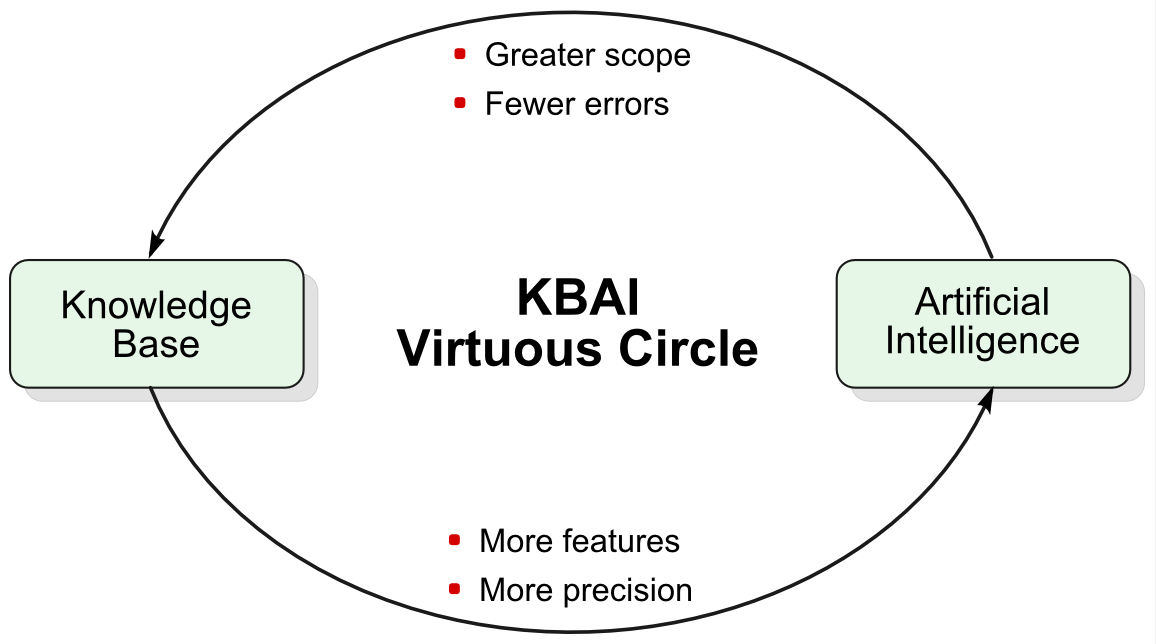Knowledge-based Artificial Intelligence Provides a Systematic Basis for Machine Learning
Inherent in Structured Dynamics‘ discussions about knowledge-based artificial intelligence (KBAI) have been some embedded premises. Some of my prior articles — and future ones to come — elaborate more fully on one or more of these points:
- The electronic availability of content-rich knowledge bases has been the most important catalyst for recent AI advances in natural language and information processing
- Wikipedia, and its DBpedia and now Wikidata derivatives, has been the most important source of concept and entity information for these purposes
- None of these sources is coherently organized; attempts to use lexical relationships (WordNet) or Wikipedia itself (DBpedia ontology) to re-organize the content are also not coherent
- Despite this incoherence, these knowledge bases have already been used to train many distant supervised machine learning applications; but, in efforts to date, each application has been manually trained, which is inefficient and time consuming
- Fortunately, these knowledge bases can be mapped to a coherent structure; there are perhaps options; we have chosen Cyc
- Once the potential role of KBs to inform machine learning is understood, the usefulness becomes obvious to re-express the KBs to maximize the features available for machine learning, including disjointedness assertions to enable selection of positive and negative training sets
- Specific aspects of the KBs for which such re-organization is appropriate include concepts, types, entities, relations, events, attributes and statements
- Therefore, a systematic re-organization of these KBs to support feature and training set generation can help automate and lower the cost of machine learning pipelines
- Once these features and aspects are established, the result becomes a grounding structure, which can facilitate mappings to other knowledge structures, data interoperability and information integration
- These same principles can be applied to existing or new knowledge bases, thereby increasing the scope and usefulness of the knowledge structure in a virtuous circle.
Precise definitions for all of the italicized terms are provided in the related glossary.
Schema.org Markup
headline:
The Ten Premises of KBAI
alternativeHeadline:
Knowledge-based Artificial Intelligence Provides a Systematic Basis for Machine Learning
author:
image:
http://mkbergman.com/wp-content/themes/ai3v2/images/2014Posts/kbai_virtuous_circle.png
description:
This article presents ten premises that guide the use of knowledge bases for more automatic and cost-effective means to apply machine learning to natural language and information processing.
articleBody:
see above
datePublished:
November 2, 2015







Hi Mike – points 1 – 10 makes too much sense for knowledge-based artificial intelligence 😉